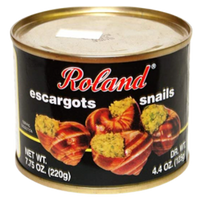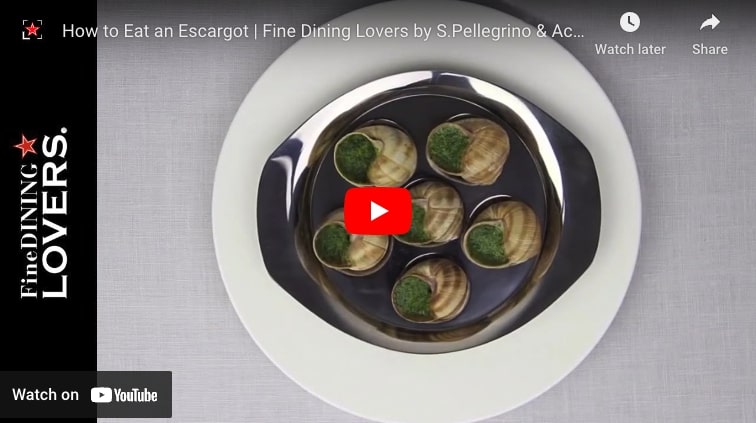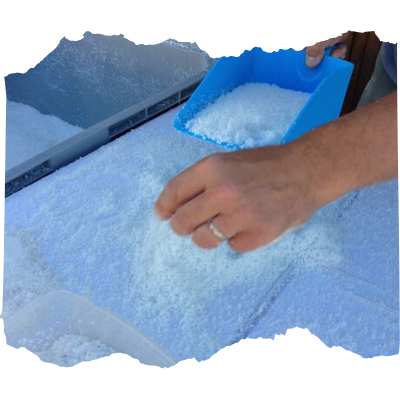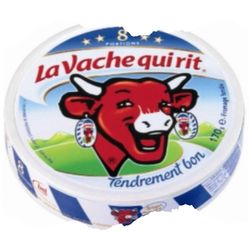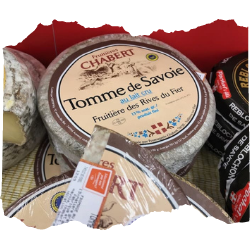Unsure about your French table manners? Click Here to download > > How to avoid these 10 food etiquette mistakes !
- Home ›
- Ze French ›
- La Gastronomie ›
- French Snails Escargots
What Is Escargot? The Curious Story Of Snails In France
Published 24 January 2022 by Leyla Alyanak
NOTE: Pages on this site may contain affiliate links, which bring in a small commission at no cost to you.
What is escargot - or - have you ever eaten snails in France?
Let's face it, we all have food that make us squirm. I have quite a few that you couldn't pay me to eat!
But escargot (es-car-GO), or snails in English, is not one of them.
So, why DO the French eat snails, a dish that is often considered one of the weird foods in France (at least weird for some)?
Are you fascinated by French food and culinary history? I just bought Let's Eat France! and have fallen in love with it. It's a large book, more suited for your coffee table, and it has some recipes (it's not a cookbook) but mostly, it is crammed with gastronomic trivia, chef profiles, history of food, the kind of tome that is easy to pick up but difficult to put down. BUY FROM AMAZON
NOTE: Pages on this site may contain affiliate links, which bring in a small commission at no cost to you.
What is Escargot, and why are snails so popular in France?
French people tend to have one of three relationships with snails.
#1, and you may find this hard to believe, is that of the French person who does not eat snails, either because they've tried and hated them, or because they've simply never tried them and have no desire to. This category does exist. Not a single escargot!
#2, by far the most common, is made up of those who eat snails occasionally. You'd think, given the publicity, that snails are so beloved they're even part of the typical French breakfast... But no.
Nothing could be further from the truth: the vast majority of French people who eat snails do so on special occasions, like Christmas dinner or New Year's, when it is traditional to do so.
Fresh snails are also present on many restaurant menus, so if we see them and have heard they are good in that particular establishment, we might order them.
#3, the French person who eats snails regularly, either because we like them (I say WE because I'm part of this third group) or because they are common in our region (my region, the Bugey in eastern central France, excels in plump, tasty escargots). There's even an escargot farm within minutes of my village.
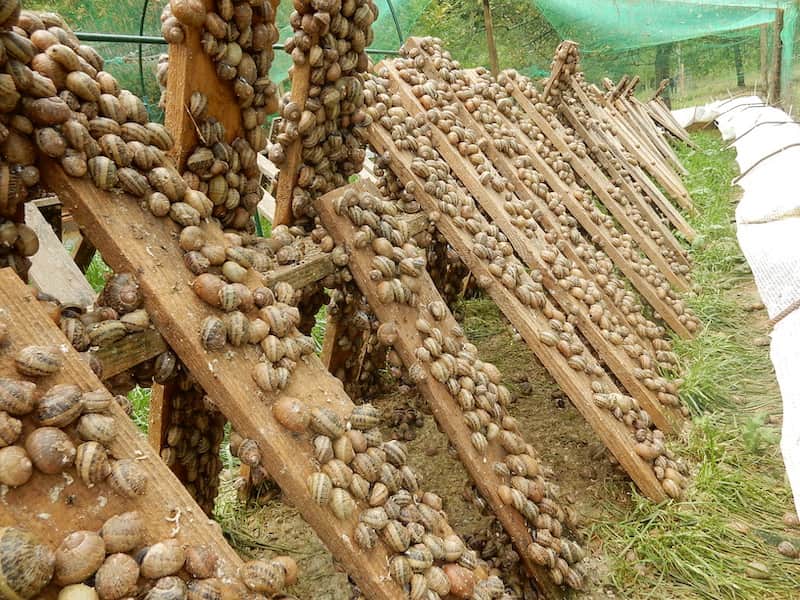 A snail farm for those who love escargots - photo by DEFI-Écologique CC BY-SA 4.0 via Wikimedia Commons
A snail farm for those who love escargots - photo by DEFI-Écologique CC BY-SA 4.0 via Wikimedia CommonsHave we managed to debunk that stereotype? The one that has us chasing les escargots across the yard with a net in one hand and a frying pan in the other?
Escargot history in France
Snails are mollusks which belong to the gastropod class and, let's get it out of the way, the same class as slugs.
They've also been eaten for millennia. There are records of snails as food during the 6th century BCE among hunter-gatherers and they were much loved by Romans. Pliny called them "elite food", and remains have been found among ruins in Benidorm in Spain and Volubilis in Morocco.
The escargot origin in France, though, is a bit unclear.
Some say they may have been brought to the country by Julius Caesar as he was going about conquering Gaul, but others point to escargot fossils in Provence, long before Caesar cast his hungry eye upon Gaul.
Snails may have become less popular during the Middle Ages but here, too, there are shrouds of mystery.
Some sources say the church considered them impure, yet some monasteries were known to have snail farms, called escargotières, because snails were categorized as fish and therefore edible on Fridays. Until 1966, Catholics were not allowed to eat meat on Fridays so the snail was a welcome substitute.
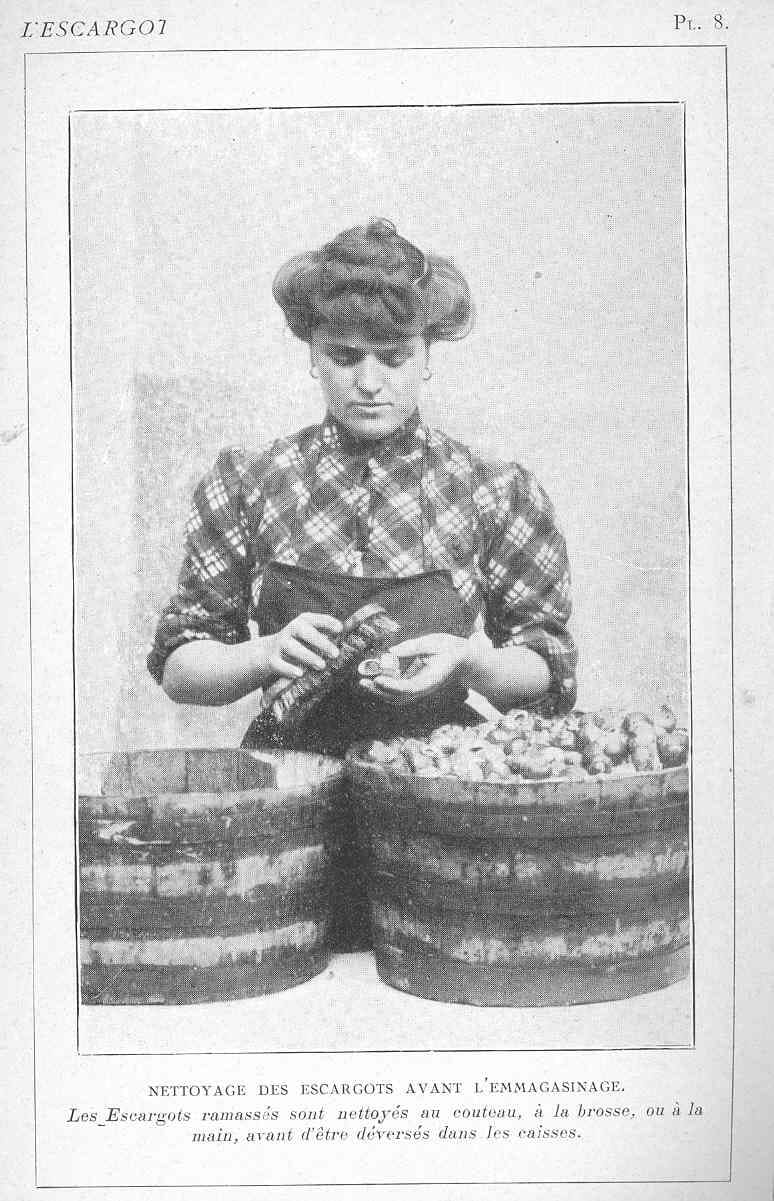 Rough translation: Once picked, the escargots are cleaned with a knife, a brush or by hand, before being piled up into containers
Rough translation: Once picked, the escargots are cleaned with a knife, a brush or by hand, before being piled up into containersWhat really seems to have propelled snails into France's gastronomic limelight was a visit by Tsar Alexander to Napoleon's chief diplomat, Prince Talleyrand.
According to the legend, the Imperial party stopped by a restaurant in Burgundy one day in 1814. Its chef, Antonin Carême, had nothing suitable on hand (this does seem highly unlikely, don't you think?)
Walking out to his garden, he spotted some snails and had the bright idea of serving them to the Tsar. He added garlic to "hide the taste" and parsley for colour, along with butter to assist in swallowing them.
When the Tsar returned home, he couldn't forget those "Burgundy snails" and so a new dish was born. Or not.
But there's another story, also involving Talleyrand. In this one, he is in Paris and wants to impress the Tsar by presenting him with a novel dish.
He asked his chef to prepare escargots. Initially, the chef planned to have cooked snails in wine but Talleyrand felt this wasn't sophisticated enough.
So the chef decided to prepare them Burgundy-style: with garlic, butter and parsley.
Whatever its origins, the dish became a runaway success and is now a staple in France.
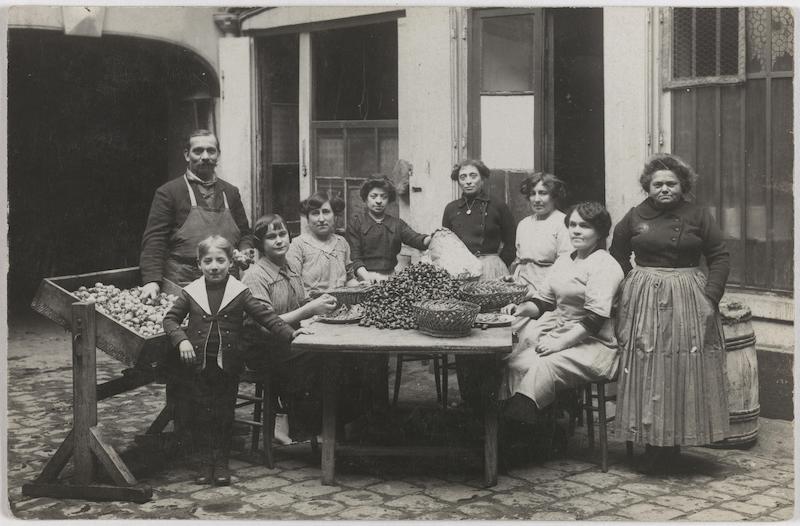 A Parisian snail shop, or Escargoterie during the 1920s, at 94, rue du Temple in the 3rd arrondissement Ville de Paris / BHVP
A Parisian snail shop, or Escargoterie during the 1920s, at 94, rue du Temple in the 3rd arrondissement Ville de Paris / BHVP How to eat escargot in France
So yes, I take issue with the belief that French and snails are almost synonymous.
We may be famous for cooking snails a certain way, but some countries eat far more snails than we do.
According to marketing reports from IndexBox, here's an annual snail consumption breakdown (yes, there is such a thing): the countries that eat the most snails are Spain (16,500 tonnes), Morocco (6000 tonnes), France (5300 tonnes) and Italy (2100 tonnes). Together, we account for nearly 69% of global consumption.
Clear, right? In France, we LOVE snails. But Spain and Morocco love them at least as much.
I'll tell you more about that in a minute but first, here's how I eat snails at home.
How to Cook Snails: Classic French Escargots in Garlic Butter Recipe
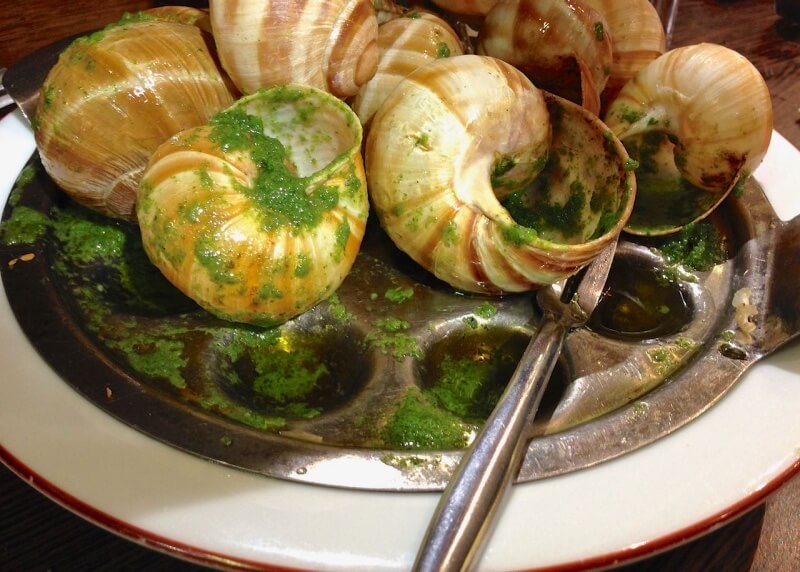
This is the simple, classic French snails recipe for Escargots Bourguignonne and involves escargots bought in a can, with the shells separate. If you don't have snail shells, you can buy/use small puff pastries. They can also be called Escargots de Bourgogne, snails from Burgundy.
Prep Time: 15 minutes
Cook time: 15 minutes
Yield: 1-2 dozen escargots
Ingredients
- 1 can (12-24) cooked escargots
- 12-24 escargot shells or mini-puff pastries
- 40-80g butter at room temperature
- 2 garlic cloves (to taste)
- pinch of salt
- handful of parsley
Instructions
- If you can, prepare the butter and let it sit in the fridge overnight. If not, you can use it right away..
- Mince your garlic and parsley, finely chopped, and add a pinch of salt. Set aside.
- Work the butter with your fork until it is soft. Add the garlic/parsley mixture, mix, and place overnight in the fridge if possible.
- When ready to prepare your escargots, drain the can.
- Using your fingers, insert one escargot into each shell. Fill up the rest of the shell with butter to the rim.
- Repeat until you have filled all your escargots.
- Place them in a baking dish or on special escargot plates, and bake for 10 min or until the butter melts and is bubbling.
- Accompany with French wine, usually white.
French cuisine snails in a can – it's the easiest way to prepare them. They come already cooked, and all you have to do is the fun part, prepare the garlic butter and plop each escargot into its shell!
If you buy canned snails, you'll need to buy your shells separately. Each time you eat escargots, you'll have to wash the shells, either by boiling or by soaking them in a cleaning solution.
Eating snails requires special implements - this is not one you can fudge. I have not found a workaround to having a snail dish, tongs and a slim fork. You'll get the hang of it after 2-3 snails!
While many people in France love eating snails, some quietly admit they don't have much taste and that the entire point of a plate of escargots is... BUTTER.
Just break off a piece of bread from your French baguette, and mop that garlicky parsley butter off your plate.
It's a gesture that with any other dish would attract reproachful looks from the prim and proper table manners police, but etiquette is quickly forgotten when it comes to escargots.
This, by the way, is the Burgundy snails recipe – there are others. You can also find a French snails dish in cream with various herbs (sage is my favourite for this particular experiment), au gratin, as part of a sauce or in plenty of other ways, including sprinkled in soups or salads.
I've also seen escargots served with foie gras, and there's even such as thing as snail caviar, which is reportedly more expensive than Beluga caviar.
If you ever order escargots in a restaurant, they are usually served by the dozen or the half-dozen (a few try to ride the fence and offer 9), and are often served in their shell.
This may require a bit of dexterity because there are utensils to manipulate: a pincer of sorts, called snail tongs, a tiny two-pronged fork, and a plate with little dips in which to stabilize each escargot.
Here's a little video that should demystify the various utensils.
Snails aren't always served in their shells in a restaurant, however. Sometimes they arrive directly on a snail plate, without a shell, but frankly, scooping them out of the shell is the fun part.
They may also be served in puff pastries. If these are of high quality, this can be tasty because the butter soaks into the puff. But all too often, the pastry shells are pre-cooked, frozen and then thawed, with that slight aftertaste that comes from frozen food.
French food lover? You might also like these stories!
Eating snails in other parts of the world
While we may like to think so, France does not hold the monopoly when it comes to escargot recipes. Curious about how the rest of the world eats them?
In Spain, they're called "caracoles" and are served in a variety of ways. One of the most popular is in bars, as tapas, where they're served with a toothpick – and are often smaller than the ones we eat in France.
I've also tried them in hot sauce – different, but good.
Lots of countries serve them with some form of tomato sauce – Portugal (caracois), Italy (lumache), Malta (bebbux) and Croatia. Or you'll find them in Southeast Asia, typically with Asian herbs or coconut milk or lemongrass. Or giant snails in Nigeria, served in a peppered sauce.
Mostly good. All different.
How to buy your snails in France
If you're not eating your escargots at a restaurant, you'll be eating them at home, and there are several ways to buy them.
- Canned snails are the easiest to prepare at home when you want to start from scratch. They are precooked, boiled in broth or cooked in champagne. This is my favorite, because stuffing the shells is part of the fun. Canned snails and shells are usually sold separately, because the shells are reusable: just boil them in water when you're done, let them dry, and they're ready for your next escargot meal.
- The refrigerated section of supermarkets usually have snails, either in the shell or in a puff pastry, for those who feel shells are unhygienic.
- The freezer section may also have snails, already stuffed into their shells and filled with garlicky butter.
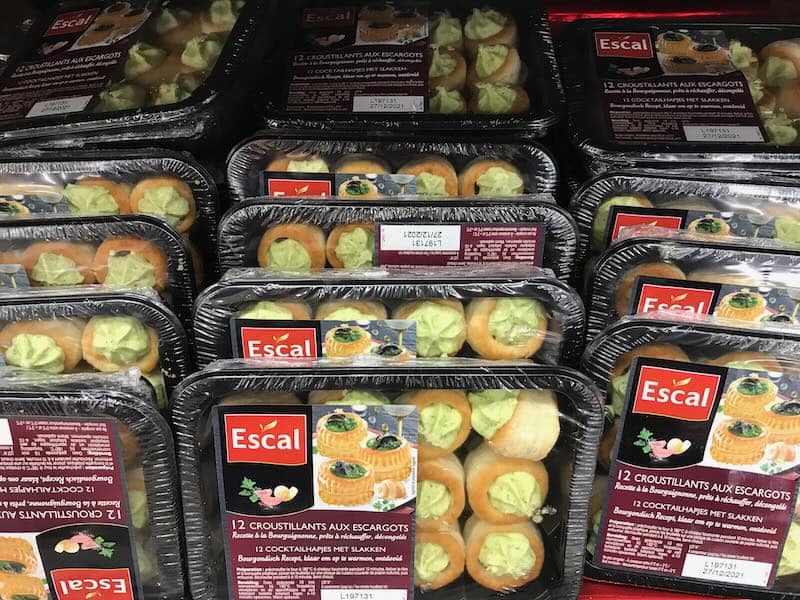 French snails in puff pastry
French snails in puff pastryEscargot FAQ and French snail facts
- Like most traditional foods in France, snails have their brotherhood, the Confrérie de l'Escargot (they have a Facebook page, in French). It brings together snail lovers – to eat escargot, talk about them, and protect the traditions that surround them.
- Not all kinds are edible snails so you can't just go into your garden and pick some. The true Burgundian snails are Helix pomatia, although they are victims of their own success and are now rare, with most French snails originating in Central Europe.
- There's a National Escargot Day: it's May 24.
- Snails are hermaphrodites, both male and female.
- The snail's proverbial slowness is real. It travels about 4 meters (13 ft) an hour.
- There are more than 400 species of snail in France.
- One of the best restaurants for a French snail dish is... L'Escargot. It's in Paris, it serves fresh escargot, but not only.
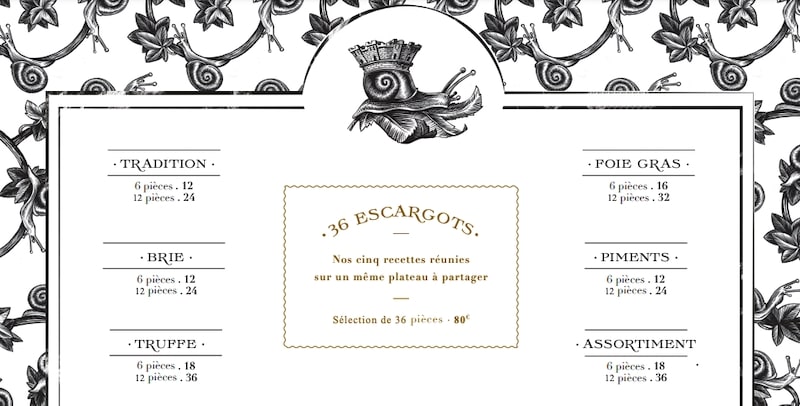 The "escargot" section of the restaurant L'Escargot - so you see, there are several varieties. I can't say I'm sure about the Brie, though...
The "escargot" section of the restaurant L'Escargot - so you see, there are several varieties. I can't say I'm sure about the Brie, though...What does escargot taste like?
What does escargot taste like?
Some say snails taste like clams. Others say they're more like fish or chicken. Some have even mentioned a faint mushroom taste.
Well, none of the above. They have no taste that I can discern! They take on the taste of the garlic butter, if that's what you're eating them with, or whatever combination of cream or other sauce you may have added!
Is escargot seafood?
Is escargot seafood?
The short answer is Yes, because seafood includes mollusks. Here's a slightly more technical answer.
How many people eat snails in France? And approximately how many snails are eaten in France every year?
How many people eat snails in France? And approximately how many snails are eaten in France every year?
The French population eats one kilo (2.2 lb) of escargots every two seconds – that's 424 million escargots a year, many of them at Christmas, with the greatest consumption in Eastern France.
What is escargot made of?
What is escargot made of?
It's not "made" of anything - an escargot is a snail, just like a steak is beef.
What is special about escargot?
What is special about escargot?
Most people tend to agree escargots have little taste on their own: what makes them tasty is the sauce that comes with them. Traditionally, that is garlic butter but often, you'll find cream-based sauces with herbs.
Did you enjoy this article? I'd love if you shared it!
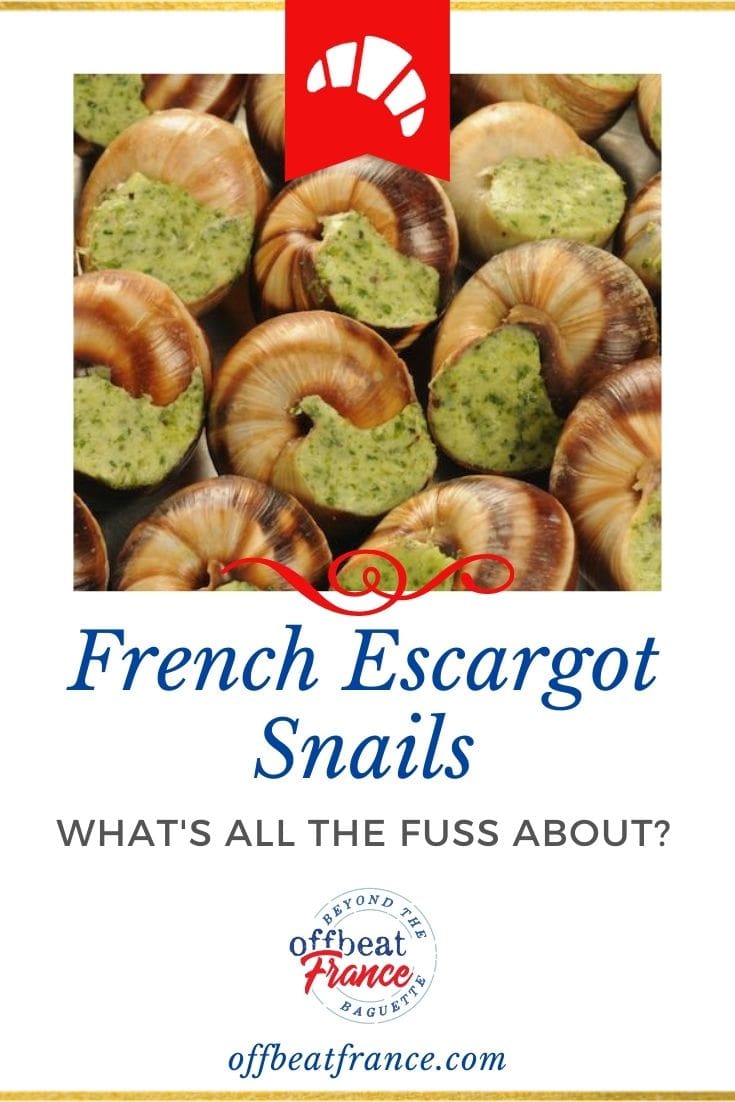 |
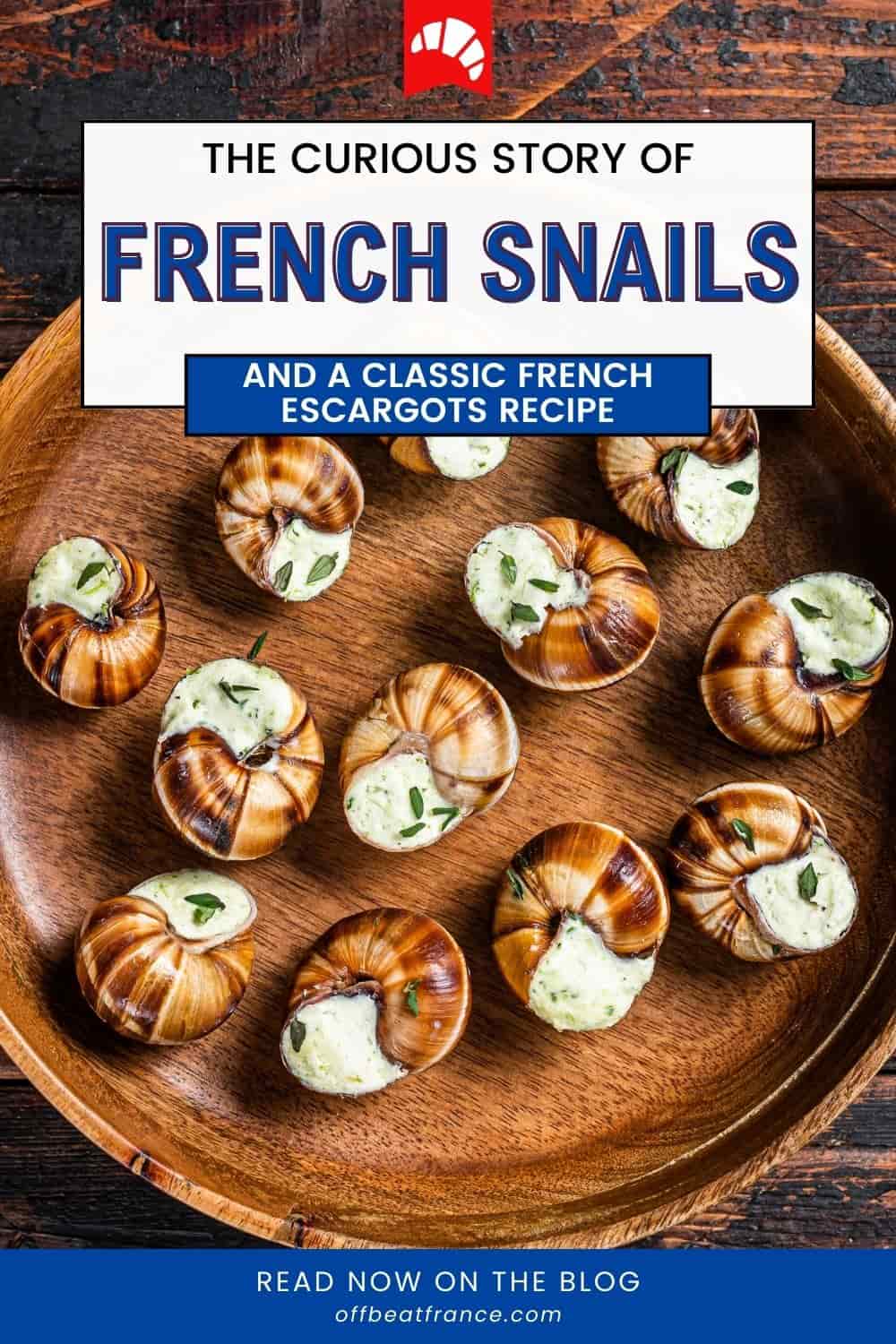 |

